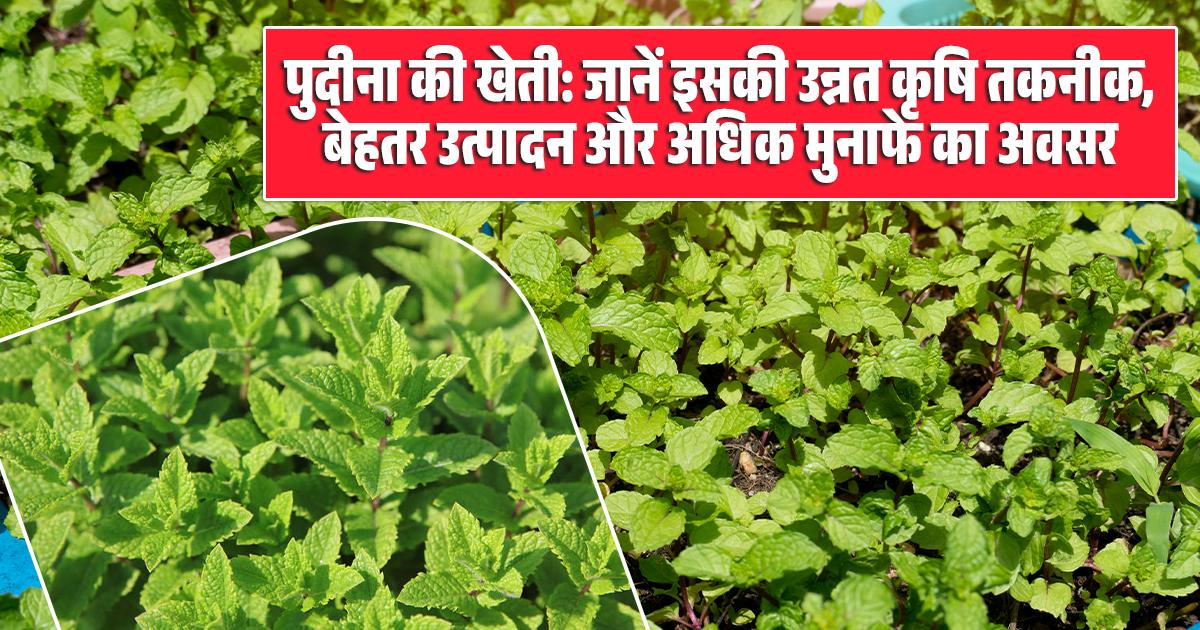
Mint is an aromatic herb widely used in chutneys, jaljeera, yogurt, buttermilk, and various culinary dishes. Additionally, mint oil has significant medicinal and commercial value. Dried mint can be stored for long-term use, ensuring consistent demand throughout the year. Due to its high market value, mint farming can be a profitable option for farmers.
Mint cultivation requires fertile soil with good drainage. Heavy or clayey soil is not suitable for its growth. The ideal soil pH should be between 6.0 and 7.5. In terms of climate, temperate regions are best for mint farming. It can be cultivated in both the Zaid and Kharif seasons, but frost during winter can damage the crop.
Harvesting and Yield: The first harvesting of mint is done approximately three months after transplantation, and the second harvest follows after another two months. Always cut the plants 4-5 cm above the ground to allow proper regrowth. After harvesting, dry the leaves in sunlight for 2-3 hours, then shade dry them before extracting oil. A well-maintained mint farm can yield around 100 liters of mint oil per hectare.
Economic Benefits: Mint oil has a high market value, making mint farming a lucrative opportunity for farmers. By adopting the right techniques, farmers can achieve better yields and maximize profits from mint cultivation.